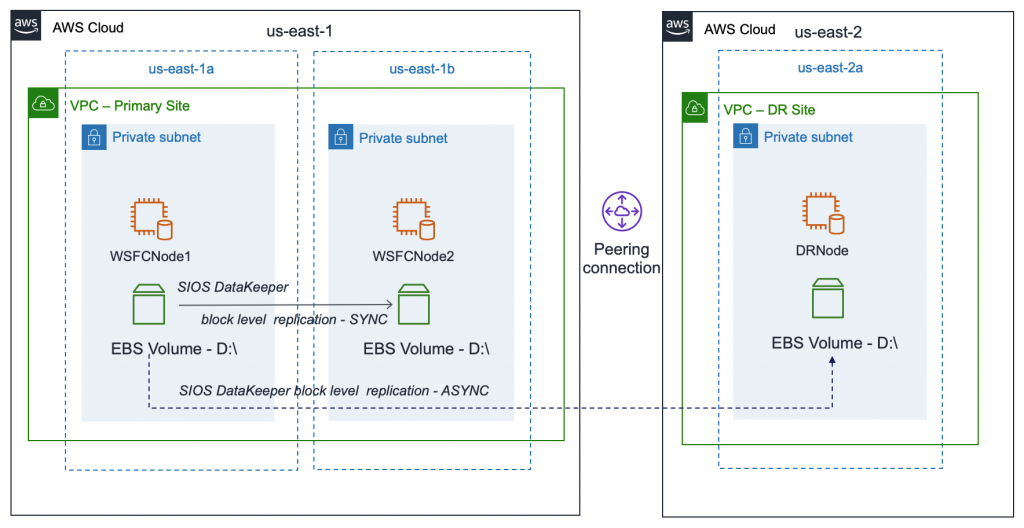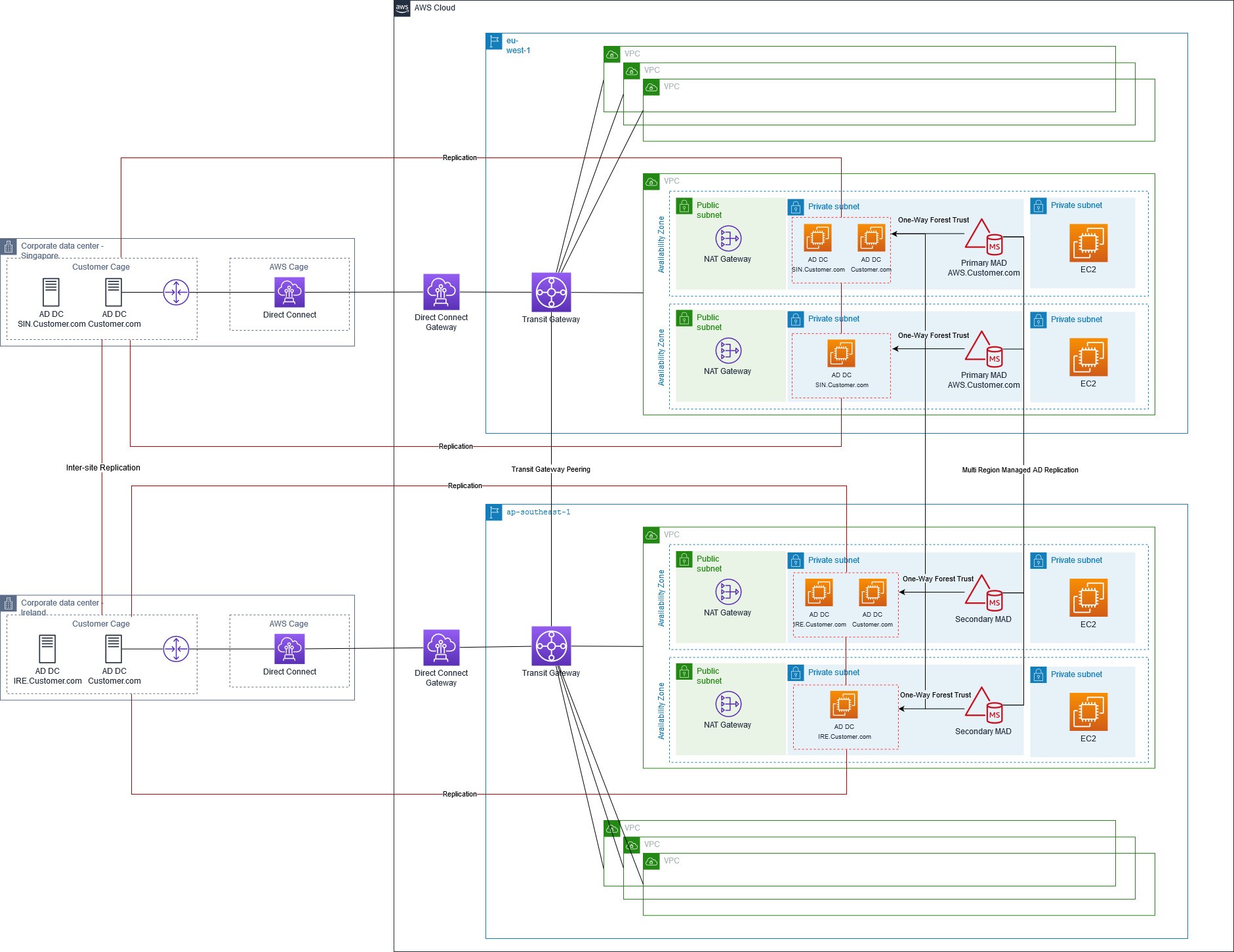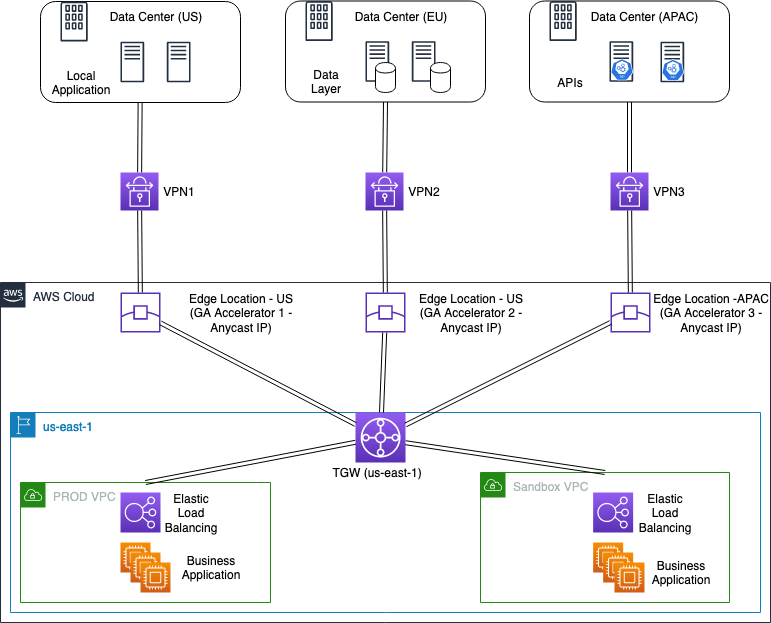AWS Architecture Blog
Category: Amazon VPC
Field Notes: How to Scale Your Networks on Amazon Web Services
As AWS adoption increases throughout an organization, the number of networks and virtual private clouds (VPCs) to support them also increases. Customers can see growth upwards of tens, hundreds, or in the case of the enterprise, thousands of VPCs. Generally, this increase in VPCs is driven by the need to: Simplify routing, connectivity, and isolation […]
Improving Performance and Reducing Cost Using Availability Zone Affinity
One of the best practices for building resilient systems in Amazon Virtual Private Cloud (VPC) networks is using multiple Availability Zones (AZ). An AZ is one or more discrete data centers with redundant power, networking, and connectivity. Using multiple AZs allows you to operate workloads that are more highly available, fault tolerant, and scalable than […]
Disaster Recovery (DR) for a Third-party Interactive Voice Response on AWS
Voice calling systems are prevalent and necessary to many businesses today. They are usually designed to provide a 24×7 helpline support across multiple domains and use cases. Reliability and availability of such systems are important for a good customer experience. The thoughtful design of a cost-optimized solution will allow your business to sustain the system […]
Augmenting VMware Cloud on AWS Workloads with Native AWS services
VMware Cloud on AWS allows you to quickly migrate VMware workloads to a VMware-managed Software-Defined Data Center (SDDC) running in the AWS Cloud and extend your on-premises data centers without replatforming or refactoring applications. You can use native AWS services with Virtual Machines (VMs) in the SDDC, to reduce operational overhead and lower your Total […]
Field Notes: Implementing HA and DR for Microsoft SQL Server using Always On Failover Cluster Instance and SIOS DataKeeper
This blog post was co-written by Sudhir Amin, Sr. Solution Architect, AWS, and David Bermingham, Senior Technical Evangelist, SIOS Technology, Inc. To ensure high availability (HA) of Microsoft SQL Server in Amazon Elastic Compute Cloud (Amazon EC2), there are two options: Always On Failover Cluster Instance (FCI) and Always On availability groups. With a wide […]
Choosing Your VPC Endpoint Strategy for Amazon S3
This post was co-written with Anusha Dharmalingam, former AWS Solutions Architect. Must your Amazon Web Services (AWS) application connect to Amazon Simple Storage Service (Amazon S3) buckets? Must the connection scale to accommodate bandwidth demands? AWS offers a mechanism called VPC endpoint to meet these requirements. This blog post provides guidance for selecting the right […]
Field Notes: Designing Multi-Region AWS Managed Microsoft Active Directory for Hybrid Environments
Previously, customers with large and complex Microsoft Active Directory deployments across geographies faced challenges when migrating their on-premises Active Directory to AWS. Integrating with AWS Managed Microsoft Active Directory also proved difficult. The AWS Managed Microsoft Active Directory Multi-Region feature that was released last year simplifies global deployment for these customers and mitigates their migration […]
Using Route 53 Private Hosted Zones for Cross-account Multi-region Architectures
This post was co-written by Anandprasanna Gaitonde, AWS Solutions Architect and John Bickle, Senior Technical Account Manager, AWS Enterprise Support Introduction Many AWS customers have internal business applications spread over multiple AWS accounts and on-premises to support different business units. In such environments, you may find a consistent view of DNS records and domain names […]
Architecting for Reliable Scalability
Cloud solutions architects should ideally “build today with tomorrow in mind,” meaning their solutions need to cater to current scale requirements as well as the anticipated growth of the solution. This growth can be either the organic growth of a solution or it could be related to a merger and acquisition type of scenario, where […]
Improve VPN Network Performance of AWS Hybrid Cloud with Global Accelerator
Introduction Connecting on-premises data centers to AWS using AWS Site-to-Site VPN to support distributed applications is a common practice. With business expansion and acquisitions, your company’s on-premises IT footprint may grow into various geographies, with these multiple sites comprising of on-premises data centers and co-location facilities. AWS Site-to-Site VPN supports throughput up to 1.25 Gbps, […]









